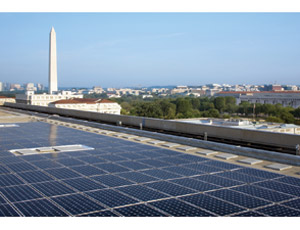A Dept. of Energy Lawrence Berkeley National Laboratory report released in December shows that, after remaining virtually unchanged from 2008 to 2009, the price of installed solar photovoltaic (PV) power systems in the U.S. declined sharply in 2010.

“PV has priced itself into the market and is now competitive with other renewables,” says Art Larson, a spokesman for San Diego Gas and Electric. The utility signed its first three PV projects in 2010. A total of 305 MW of PV will come under contract in California’s Imperial Valley once construction is complete in 2014.
Based on data from 78,000 PV systems, which is 70% of all grid-connected PV capacity installed in the U.S., the report notes that the average cost of systems installed through the California Solar Initiative (CSI) program declined by $1 per watt during the first 10 months of 2010. The average cost of systems installed in New Jersey declined by $1.20 /W during the first six months of 2010.
The report shows “significant” economies of scale: systems of less than 2 kW completed in 2009 averaged $9.9/W, while those of greater than 1,000 kW averaged $7/W, or 29% less. Systems installed on new homes cost $1.60/W less than comparably sized systems installed in rooftop retrofit applications.
“International experience suggests that greater near-term cost reductions may be possible with increased market scale in the United States,” the authors conclude, citing the installed cost of $4.7/W for small residential systems in Germany.
Cara Libby, project manager at the Electric Power Research Institute, credits slightly lower demand and subsidies globally for the lower prices. In Europe, “infeed tariffs,” or subsidies, were decreased drastically in Germany and Spain in 2010 after they were oversubscribed. In Spain, the response was six times higher than expected, leaving the government to pay more than it had budgeted. “Demand will continue in the U.S., however, as public policy will require utilities to buy alternative energy,” Libby said.
Libby predicted that, as prices continue to decrease, margins will shrink, forcing manufacturers to look for economies of scale, more standardized modules and innovative business practices.
Mike Marelli, Southern California Edison director of contracts for renewable and alternative power development, predicts PV would lead alternative-energy growth in 2011. He touts solar’s advantages: rooftop installation, which cuts transmission costs, a smaller footprint and easier permitting. “It has become very competitive with other alternative-energy sources,” he says.
PV’s future is not all sunny, however. For undisclosed reasons, the utility just canceled a 709-MW contract with San Jose, Calif.-based Tessera Inc. for 26,540 SunCatcher Stirling solar dishes planned for the Mojave Desert.



Post a comment to this article
Report Abusive Comment